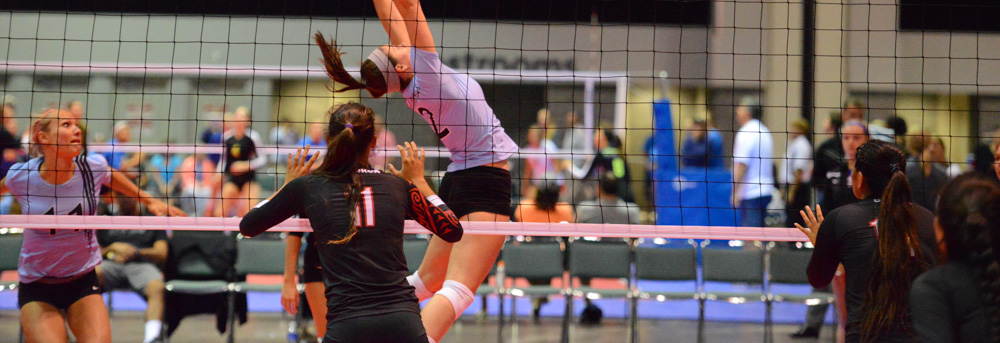Body Control Camp Review
Prevent tightness and pain tomorrow, mobilize today.
Here are fifteen key points for athletes and parents following Triangle Volleyball Club’s first Body Control Camp to kick off the 2015 season:
1) Pain isn’t the problem, it’s your body’s warning signal.
2) The most common cause of pain in otherwise healthy athletes is suboptimal positioning and movement.
3) The three most important factors in injury prevention are position, position, and position. Learning to consistently operate in a good position requires conscious attention.
4) Good positioning starts with posture, and establishing and maintaining a neutral spine.
5) Athletes should “get organized” throughout the day by squeezing glutes, engaging abs, and spreading the floor. Strive to keep 20% abdominal tension and external rotation torque in hips at all times to maintain neutral spine, support knees, and maintain/improve a healthy foot arch.
6) “Get organized” should also include centering ribcage over pelvis, pulling shoulders into a neutral position, and centering ears over shoulders.
7) Sitting is the volleyball athlete’s biggest enemy. Maintaining neutral spine relative to the pelvis while seated is challenging even for short periods of time – like balancing a spinning volleyball on your fingertip. It’s easy to slip into posterior or anterior pelvic tilt, resulting in stiff and shortened hip flexors (your deep abdominal muscles and muscles in the front of your hips). Sitting also encourages slumped-forward shoulders, resulting in a stiff thoracic spine. Short hip flexors and matted-down glutes interfere with running mechanics by encouraging a duck-footed gait, which predisposes to knee and ankle pain and injury. The combination of pelvis and thoracic spine misalignment predispose to lower back pain. Finally, slumped shoulders and an immobile thoracic spine are a setup for shoulder pain, especially in hitters.
8) Try not to sit for long periods of time. When you must sit, get organized first and then lower yourself to the edge of the chair using good squat mechanics while maintaining abdominal tension. Reassess and reposition yourself often. When you lose alignment, it’s best just to reorganize while standing and sit back down. You don’t always have to sit perfectly upright; you can lean back while maintaining a neutral spine with your core engaged.
9) Athletes should keep their heels on the ground and avoid flip-flops (sandals that do not enclose the heel) as much as possible. Both heel elevation and open-heel sandals wreak havoc on joint positioning and gait. Heel elevation and open-heel sandals are especially damaging for athletes with a history of plantar fasciitis, shin splints, or knee or back pain.
10) Athletes with a history of weak foot arches or being “flat footed” should look at building and maintaining a solid arch as a long-term process. It starts with getting – and staying – organized, focusing on keeping feet straight ahead at all times, and strengthening the muscles that maintain the arch. “Spreading the floor” by creating external rotation torque in the hips with feet straight ahead will create an arch. With practice and strengthening through properly-performed exercises like the squat with feet straight ahead and knees out, athletes will be better able to maintain that arch.
11) For athletes lacking hip mobility, the two most critical mobilizations to counteract sitting and reclaim natural hip function are mobilizing in the bottom position of the squat and the Couch Stretch, as explained in High Yield Homework. These two mobilizations should be practiced daily, with the goal of being comfortable sitting in a deep squat position with feet straight ahead, knees outside the big toe, and heels on the ground. When seeking to reach this goal, keep your feet straight ahead at all times, and elevate your heels as necessary. Gradually remove the heel elevation as your mobility improves.
12) Maintain feet/toes forward in the direction of movement at all times while walking/running/jumping/landing. If you tend towards a duck-footed gait, find people to hold you accountable and watch your foot positioning – then make a better decision. If your duck-footed gait results from limited hip mobility, focus on the couch stretch to improve hip extension and work on improving internal rotation with extension if necessary.
13) Jump and land using both feet whenever possible. Ideal jumping/landing looks like an ideal squat – feet forward, hips back, knees out, shins vertical. Load the hips, not the knees, by ensuring hips move first and keeping knees behind toes. Practicing a solid air or weighted squat and internalizing the cues – feet forward, squeeze glutes, engage abs, spread the floor, sit back, knees out – builds muscle memory for safe jumping and landing.
14) When you have athletic pain or discomfort, seek to identify and resolve positioning and movement faults first. Then address tight tissues both above and below the involved joint(s). So with knee pain, free up slack from the calf through the hip. With plantar fasciitis, mobilize from the distal foot through the hip. With low back pain, look from the legs to the thoracic spine. With shoulders, consider neck, upper back, and scapula as well as the arm.
15) Cool-down techniques such as active (PNF/contract-relax) stretching and deep tissue manipulation (smashing with flossing) are extremely valuable in creating slack above and below painful joints. More aggressive techniques like PNF stretching are best used for cool-down, and should not be used before practice or competition. It is the athlete’s responsibility to deal proactively with pain and discomfort – prevent tightness and pain tomorrow, mobilize today.
